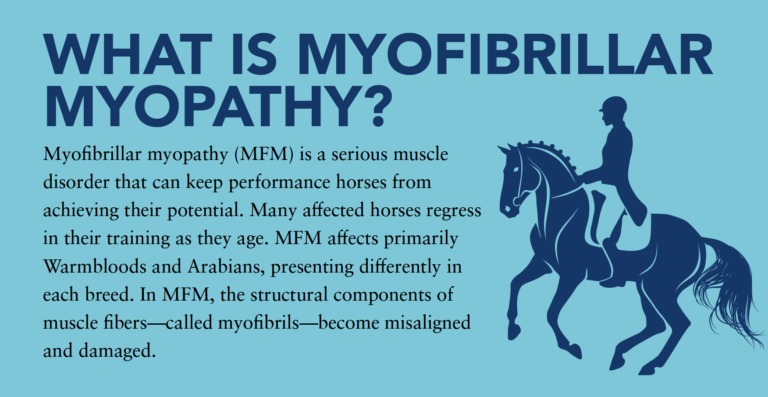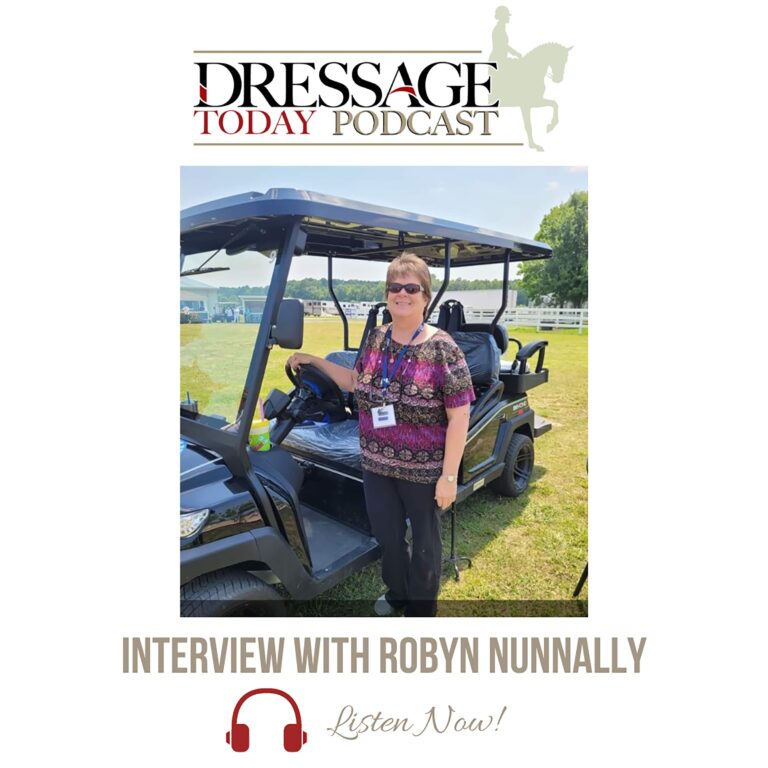Q: My trainer is teaching flying changes to my 9-year-old Hanoverian gelding. But my horse throws in changes on his own, and he can launch forward and ignore her aids. He can clearly do the changes, but he seems to have a problem doing them when aided. Any ideas?
A: Let me first say that without a video, it’s difficult to help because the solution to a problem like this is often very specific. But I can give you a few general ideas for inspiration.

Performing a flying change is a totally natural way for horses to change direction. When you see horses running free, they do them effortlessly. For this reason, when horses are green and not confirmed in the flying changes, they might offer them, popping them when not even asked.
The quality of the flying change is directly related to the quality and balance of the canter. As a general rule, big, expressive canters—which we are looking for in dressage horses—can be a little harder to keep organized and might make the teaching of the flying changes slightly harder. In contrast, flatter canters with less expression can make it easier. That said, most horses, unless they have a lameness problem, can learn clean flying changes.
It’s often when we start schooling the flying changes that we get into trouble. I believe the reason for this is that dressage riders tend to wait too long to introduce the flying change to the horse. You say your horse is 9 years old. Other disciplines such as Western, racing or hunter/jumpers introduce them much earlier.
Many dressage riders want the horse to have a decent counter canter before they start with flying changes. This is not wrong, yet some horses get so confirmed in the counter canter that they think they are bad if they offer a flying change. Some riders also punish the horse when he offers a flying change without being asked or when it is disorganized or a little wild. This can confuse the horse about what is expected of him and he might associate the flying changes with tension.
I teach my horses, including young ones, that it’s OK to pop a flying change even if it’s not what I really want. I don’t punish them and I don’t obsess about getting a perfectly clean flying change at first. I try not to be over-controlling. If the horse is not quite on the bit during the flying change, I ignore it. For me, it’s important for my horse to realize that there’s nothing to worry about. This way, he keeps a relaxed attitude toward the flying changes. He only needs to understand the difference between a flying change that’s aided and one that’s not. Then the horse can allow the set-up process: The rider straightens him, changes the bend and/or flexion, switches her legs and weight and then aids the change.
A horse that is starting the process and offers the flying changes voluntarily generally takes a solid year to be able to perform a confident, clean flying change. Then I start to explain to the horse that we have to have a half halt (to establish balance and control) either before the set-up or after the flying change. When the half halts are established, the horse will generally let you set him up for the change and be better balanced. To do a half halt, simply aid the horse for an instant as if you were going to ride a halt. In the canter, it feels like a hesitation with the seat in the up phase, with the thighs and lower legs closing around the horse and the outside hand perhaps closing as well, depending on the horse’s reaction.
If your horse is 9 years old, he has probably done a lot of counter canter and might think a flying change is the wrong thing to do. He needs to be schooled consistently to help build his confidence. Feedback is essential so the rider knows what the horse did and can correct or reward accordingly. Unless you have many mirrors, you need one person to call the changes. This is because people see things differently and oftentimes will not agree on what the horse actually did. To stay calm, the rider must have confidence in what the horse actually did. She must not overreact if the horse gets nervous or wild. Wrapping alternate pairs of the horse’s legs with differently colored wraps helps see clearly what the legs are doing.
There are many patterns to use to teach changes. You will find that most trainers have their own favorites. The tendency to be strong with the outside leg in counter canter, which initially might be required, gets us into trouble if we do not teach the horse to be straight in counter canter. Remember, straightness is relative to the line of travel, so we teach our dressage horse to live in shoulder-fore to be straight.
Think about how many horses you see that look as if they are in a renvers position in the counter canter (i.e., haunches out shoulders falling to the inside). This tendency encourages them to change in front first and possibly late behind.
One of my favorite patterns is to pick up the true lead on the quarterline so the wall or rail does not affect the horse. Then walk and pick up the counter canter, being careful that your weight is positioned toward the lead and the lower legs are in the correct position so the horse does not get confused. From the counter canter, walk, ride a few steps of travers and then transition to the correct lead in the slight travers position. Walk, go back to the counter canter and repeat until the horse will let you position him toward the new lead and stay straight in the counter canter. Then aid the flying change.
Since you have made the horse more sensitive to the new outside leg with this exercise, when you switch your legs and aid with the new outside leg, he should make a clean change. If not, repeat until you feel he anticipates and/ or understands the process. By riding this pattern, most horses will figure out what you want: the shoulders up and straight and not falling in toward the new lead, the haunches positioned slightly toward the new lead and that a change that is clean or early behind, which is preferable and easier to correct than late-behind changes.
It is important to be patient and calm. With enough feedback and encouragement to the horse, he will understand the flying changes and become confirmed. School the flying changes often without drilling them and reward quickly and lavishly to establish trust.

Janet “Dolly” Hannon is a U.S. Equestrian Federation (USEF) “S” judge and a U.S. Dressage Federation (USDF) bronze, silver and gold medalist. Currently, she is the chair of the USDF Freestyle Committee. Based in Golden, Colorado, she teaches and trains at Legacy Valley Farm in Arvada, Colorado (legacyvalleyfarm.com).











